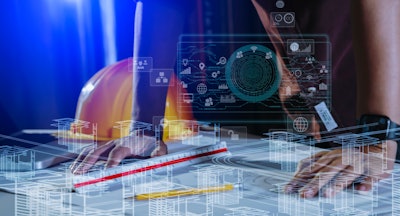
At the start of 2025, only 2% of construction firms reported using AI, but that percentage is expected to double over the course of the year. Not only will AI support productivity but two in three construction firms agree that the use of cutting-edge tools will help them recruit talent. Still, confusion persists surrounding how contractors can efficiently and cost-effectively integrate AI into their technology stacks. Where should they start to get the most ROI? How can they ensure that today’s deployments support their needs in the years ahead?
While there are various applications for AI on construction sites, its impact on jobsite intelligence will be most transformative. Adopting an AI-enabled jobsite intelligence solution gives contractors the ability to make sense of the terabytes of visual data they collect and use that information quickly, accurately, and intelligently to drive business and operations.
By transforming visual data into jobsite intelligence, AI will help contractors reduce costs, improve safety and boost efficiency.
AI’s Current Impact on Jobsite Intelligence
With its current capabilities, AI is helping contractors make better sense of data for more informed decision-making and proactive approaches to jobsite safety, security and productivity.
Supporting Efficient Access to Critical Information
As construction sites deploy more cameras for security, safety, and progress monitoring, they gain access to larger quantities of visual data. This visual data gives construction managers visibility into what’s happening across the jobsite without always having to be in multiple places at once, live on the phone or wait for reports to be submitted. While incredibly valuable, sifting through thousands of images and videos is cumbersome.
The opportunity for real-time accurate visual data is a key component to closing the industry’s well-established productivity gaps. AI-powered jobsite intelligence speeds up the sorting, searching, and identifying of important information, and makes it easily accessible via a web browser or mobile phone. When trained for construction, AI turns that visual data into actionable intelligence. AI models can identify and automate the search for common occurrences across the jobsite, such as detecting PPE, a concrete pour or tracking a pickup and delivery truck.
Driving A Proactive Approach to Safety & Security
The ability to see what’s happening across the jobsite in real-time lets contractors develop a more preventative approach to safety and security. Jobsite intelligence software gives supervisors and project managers the insight to proactively prevent an incident from taking place.
For example, using AI the software can detect if workers lack appropriate PPE and send alerts or notifications to managers via their phone apps so they can intervene and coordinate appropriate next steps. Likewise, if a concrete pour arrives on the wrong day and endangers the jobsite by creating too many overlapping processes, AI can alert managers to ensure everyone’s safety. When integrated into project management platforms, this information can automatically or easily validate against scheduling for simplified documentation.
Holistic Jobsite Practices
In addition to supporting day-to-day monitoring, visibility gives contractors insight into broader processes and practices taking place across the jobsite. Construction managers can easily see how much progress teams typically accomplish and identify patterns in workflows, scheduling, and delays. With this information – and the right search parameters set up in jobsite intelligence platforms – managers can automatically sift and flag data and use that information to learn and improve operations. These insights also enhance new employee training and provide helpful insight to leadership and even clients when it comes to reporting progress.
AI’s Future Impact on Jobsite Intelligence
While AI has already enhanced efficiency and safety tremendously, we're in the early stages of adoption and realizing its full potential on the jobsite.
Powering More Sophisticated Visual Progress Monitoring
BIM models are becoming increasingly sophisticated, incorporating additional data points for a more detailed representation of a building plan across its lifecycle. There are opportunities to connect AI-enabled jobsite intelligence software with BIM platforms to visualize up-to-date progress in real-time and see what has been scheduled, what has been completed, and what is still in the design phase. While still experimental, the integration of visual data feeds and AI-powered search functionality from jobsite intelligence platforms has the potential to positively transform planning and productivity.
Connecting People and Systems for Timely Alerts
It only takes a few milliseconds for cameras to process an image and AI to interpret it. This information is already available via web platforms or mobile phones, with notifications enabled to alert supers or managers when something needs their attention. There is also the possibility that AI-enabled jobsite intelligence will integrate with other technologies (such as wearables) to scale the reach of these timely notifications.
Best Practices for Integrating AI into Jobsite Intelligence Workflows
Not all jobsite intelligence platforms are the same. It’s important to identify one that fits within the technology infrastructure of your jobsite – which will help realize the benefits of AI faster and with less headaches. Here are a few key factors to keep in mind as you kick off a deployment:
- Understand the problem you are trying to solve. With so much industry hype for AI, it’s tempting to deploy it quickly. However, taking the time to understand the root of the challenge and seek out a tech partner with expertise in AI will help identify effective solutions.
- Consider the supporting tools you’ll need to drive adoption. AI-enabled insights are only as strong as the vehicles used to collect data. If jobsite cameras don’t have a high enough resolution to clearly capture a hard hat, the AI-enabled jobsite intelligence platform won’t be able to alert managers if workers forget to wear their PPE.
- Seek out a solution that’s built, designed, and maintained by one or few companies. A total solution that is fully integrated is much easier to adapt and integrate new capabilities as technology evolves. Identifying a tech partner with an advanced in-house engineering team helps customize solutions according to contractors’ unique needs, ensuring optimal ROI now and in the years to come.
- Choose a solution that’s SOC 2-compliant. While jobsite cameras and AI-enabled software solutions pose great benefits to the productivity, security, and safety of jobsites, they also present compliance risks. Solutions that align with the SOC 2 security framework ensure sensitive data remains protected.
Stepping into the Future of AI-enabled Jobsite Intelligence
AI is currently and will continue to play a key role in driving the future of jobsite intelligence, helping contractors deliver safe, secure and successful projects. As a lifelong technologist, I am optimistic about AI’s potential but mindful of the requirements to work in the unique and variable construction industry.
Jobsite intelligence platforms – built specifically for construction with AI functionality integrated – are the industry’s answer to maximize the value generated from terabytes of visual data.
Opportunity awaits.








![Lee Boy Facility 2025 17 Use[16]](https://p1-cms-assets.imgix.net/mindful/acbm/workspaces/default/uploads/2025/09/leeboy-facility-2025-17-use16.AbONDzEzbV.jpg?auto=format%2Ccompress&fit=crop&h=167&q=70&w=250)
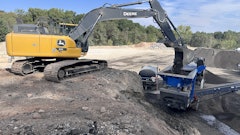

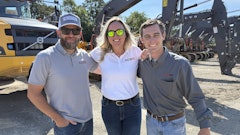



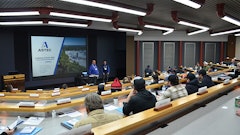

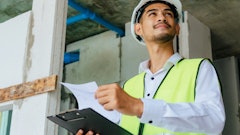

![Lee Boy Facility 2025 17 Use[16]](https://p1-cms-assets.imgix.net/mindful/acbm/workspaces/default/uploads/2025/09/leeboy-facility-2025-17-use16.AbONDzEzbV.jpg?ar=16%3A9&auto=format%2Ccompress&fit=crop&h=135&q=70&w=240)
